Stages Dash L50 Review | M50
 This detailed Stages Dash L50 Review (M50) looks at a high-end training tool that has now morphed subtly from an earlier incarnation to now include many mainstream & advanced features. It has compellingly awesome specs as well as annoying foibles, yet if you add all the pro and cons together you still come away with an impressive beast chomping at the heels of Wahoo and Garmin – with caveats.
This detailed Stages Dash L50 Review (M50) looks at a high-end training tool that has now morphed subtly from an earlier incarnation to now include many mainstream & advanced features. It has compellingly awesome specs as well as annoying foibles, yet if you add all the pro and cons together you still come away with an impressive beast chomping at the heels of Wahoo and Garmin – with caveats.
-
Price - 90%
90%
-
Apparent Accuracy - 95%
95%
-
Build Quality & Design - 80%
80%
-
Features, Including App - 90%
90%
-
Openness & Compatability - 85%
85%
Summary
 If, like the Team Sky of old, you have Stages power meters and if you use the Stages Link performance training software then you’ve probably already got a Stages Dash L50 or M50. You’re just reading this for someone to tell you that you made a good choice.
If, like the Team Sky of old, you have Stages power meters and if you use the Stages Link performance training software then you’ve probably already got a Stages Dash L50 or M50. You’re just reading this for someone to tell you that you made a good choice.
You made a good choice.
As a one-stop-shop, with those 3 components, the Dash L50/M50 should reliably do its job to support performance-focused riders. It slightly falls over in targetting other kinds of riders who might instead buy a Wahoo simply because Dash does not deliver as sleek a ‘user experience’; add in the required subscription to Stages Link for some premium features and the initially-attractive Stages Dash loses some of those potential customers.
I could focus on the ‘cons’ (below) and bemoan the design of the power-on button or the out-front mount but there is something endearing about the Dash, it makes you want to like it. There’s something honestly-rugged about it and its appeal to ‘proper’ cyclists is somehow compelling. Where the Hammerhead Karoo would have THE most beautifully crafted onscreen data metric for a power zone, the Dash has a little box with a varicoloured edge. But, you know what? it works. It does the job and that commands respect, at least in my eyes.
But it does more than the aesthetics job. It does the training job too…and it does it WELL.
Pros
- The screen is so bright it will blind you and the power management will see you through to the end of your longest of long rides.
- Feature city – it has them all for those of you who want to train ‘properly’
- Cool and sometimes innovative on-screen graphics
- TBT and mapping support
- Robustly designed exterior
- Cool adaptive training zones
Cons
- The standard out-front mount is a bit rubbish and you must use a tether to avoid accidental loss.
- The art of using the power button escapes me. Apparently it was designed this way to avoid accidental power-ups whilst in transport.
- No mapping intelligence ie Dash doesn’t include re-routing or on-device routing
- With an interface and smartphone app designed by a techie, usability could be improved.
- No Fe-C control – due to be added in April 2020.
- No Strava Live Segments
- Some features require extra payment (this may change in April 2020)
What Is The Stages Dash L50 (M50)
The Stages Dash L50/M50 are fairly high-end bike computers targeted at performance-oriented cyclists.
Both have the same software and so the L50 and M50 are very similar, with the L50 being a mid-sized unit and the larger and more expensive of the two. The M50 would be best compared to a Wahoo BOLT or Garmin Edge 520/Plus/530. Perhaps you might compare the larger L50 to an ELEMNT ROAM or Hammerhead Karoo.

Stages would say that what sets their Dash units apart would be the price; good course handling; good workout functionality (FE-C control to follow); good, free maps; plus comprehensive data presentation and analysis in Stages Link.
L50: $299/E299/GBP259/A$499
M50: $249/E239/GBP199/A$399
First Impression, User Interface & User Experience
I’ve covered well over 1000 miles with the Dash but I still remember my first impression of the Dash as a solid bike computer. I’ve seen prettier but it looks perfectly fine and normal. Except for the screen, that would be a replacement for you CAR’s front headlight #BRIGHT. The mount and buttons could both be improved but were ‘functional’ in most cycling scenarios.
The menu interface on the Dash (and indeed on Link as well) is not wholly intuitive. There are minor quirks on the Dash, like finding how to turn off the GPS but most of me saying “there are quirks” is just that I’m more used to something else. Actually the Dash is fine to use although some obvious things stood out to need improvement such as an automatic power meter calibration prompt (available as a shortcut).
It’s fairly awesome how you can configure the Dash screens on the device or on the web or on the app – that must have been big development effort. However, in mentioning those other software parts of the Stages solution, we get on to talking about the app which is not as sleek as you find on the Wahoo. Then there is the Link analysis platform which can do EVERYTHING you probably want (and more besides). Stages Link is a highly complex piece of software designed by sports techies and I admit to not getting anywhere near fully to grips with. Apple would not have designed this hardware or software – it’s probably more akin to BMW design in the 1990s ie perhaps ‘utilitarian’…and meant in a nice way rather than a criticism.
So. Dash and the wider Stages ecosystem is a feature-packed, competent but complex offering.
Let’s start off with the high-level specs and features. I’ll then go on and discuss some of the key aspects of the Dash.
Stages Dash L50 Specifications & Highlights
These are the highlights for the Stages Dash. Some are unique, some are rarely found, some are found on competitor models but are useful nevertheless.
Features of Note
- ANT+ and BLE sensor support – power meters, speed, cadence and HR sensors
- Varia Radar support
- SMS and phone call notification
- Can be mounted either portrait or landscape and screen appropriately rotated. Screens have dark/light modes
- 16 data fields on some screens (max 12 on M50)
- Free, global cycle-specific maps (custom OSM) available to download
- Upcoming elevation profile when following a course
- Auto-adapting Zones (I think only as you make breakthrough sessions ie NOT within a workout, like Xert)
- Overlay routes and TBT (not re-routable), create routes online and 3rd party route sync
- Device configuration changes possible on a PC, on the app or on the Dash itself
- Structured workout support, supporting multiple targets per step, supporting repeat previous step
- Workout compliance in Link
Official Tech Specs
These are the official specs plus a few notes I’ve added for clarity.
- Display Size: 2.75″ (68mm) measured diagonally, colour. Non-touch
- Weight: 126 grams
- Overall dimensions: 85mm wide x 73mm tall x 20mm depth (landscape)
- Satellite Network: MediaTek GPS and QZSS with SBAS (WAAS, EGNOS, MSAS, and GAGAN) fast connection
- Battery: Rechargeable LiPO (USB), (M50: 1800mAh, L50: 2300mAh), will recharge whilst recording
- Battery Life: Up to 24 hours of total runtime; 11+ hours while using maps, courses, power and heart rate sensors
- Waterproof Rating: IPX7
- Shock Proof
- Recording interval: Live
- Alerts: audio and visual, user selectable
- Data transfer: USB and Bluetooth (not WiFi)
- Barometric Altimeter
- Internal temperature recording
- Setup: On unit or Stages Link App
- Customization: On unit or Link website
Performance Display Metrics
Each ride profile is highly configurable. Here’s one that I’ve ostensibly created for navigation, with 7 screenshots shown edited on an iPhone.
So it has the usual stuff that you would expect for a performance bike computer, like how zero cadence/power is handled and advanced power metrics like NP.
If you look at the 7 images above, Stages Link mobile lists all the usual metrics and other special metrics too such as the full-screen CUE SHEET metric. You look and see NP is offered and then you might say “Yes, but it only has NP and none of the variations on it“. Well, that’s not true, many of the metrics are then each individually configurable. Let’s take NP as an example, once you have chosen it you can go on to display it as Lap/Last Lap/Ride and/or MAX/Average (called: span & operation) – ie that’s effectively 6 (six) NP metrics that can ALL be displayed. In some ways I do NOT like how this is presented and managed in the app however I’m probably wrong to hold that view as the full list of every variation of every measure would probably be a truly immense list…again, looking at the images above from the app, the metrics at their most basic level cover 4 screens as it is! Fully expanded it might be 14 pages!! There’s probably somebody’s favourite metric missing…I just couldn’t find it.
Let’s revisit a ride profile from a different perspective by looking at one edited on the web. Just like what’s found on the app, it’s fully configurable and I’ve circled some of the more interesting aspects of what is available. First up you can see that the sensors can be made available to specific profiles. Then you can see the OPERATION and SPANs applied to some metrics, and I’ve circled the POWER COLOR WHEEL (watts) which is a special kind of graphical metric. I’ve also circled the FIELD SIZE area of the screen which allows you to enlarge any individual metric on the page.

We then come to what it looks like when you are using it during a ride in all its technicolour glory. You can see the Dash displaying the colour wheel, you get a wattage when you are actually pedalling 😉 and a coloured indication of your zone. You can also see the 75bpm ride average HR has a blue colouration around the metric’s cell, again this colour represents the zone (heart rate zones in this case). Also on this image, we get the Varia alert displayed for an approaching vehicle. From a functional perspective, the Dash is powerful.
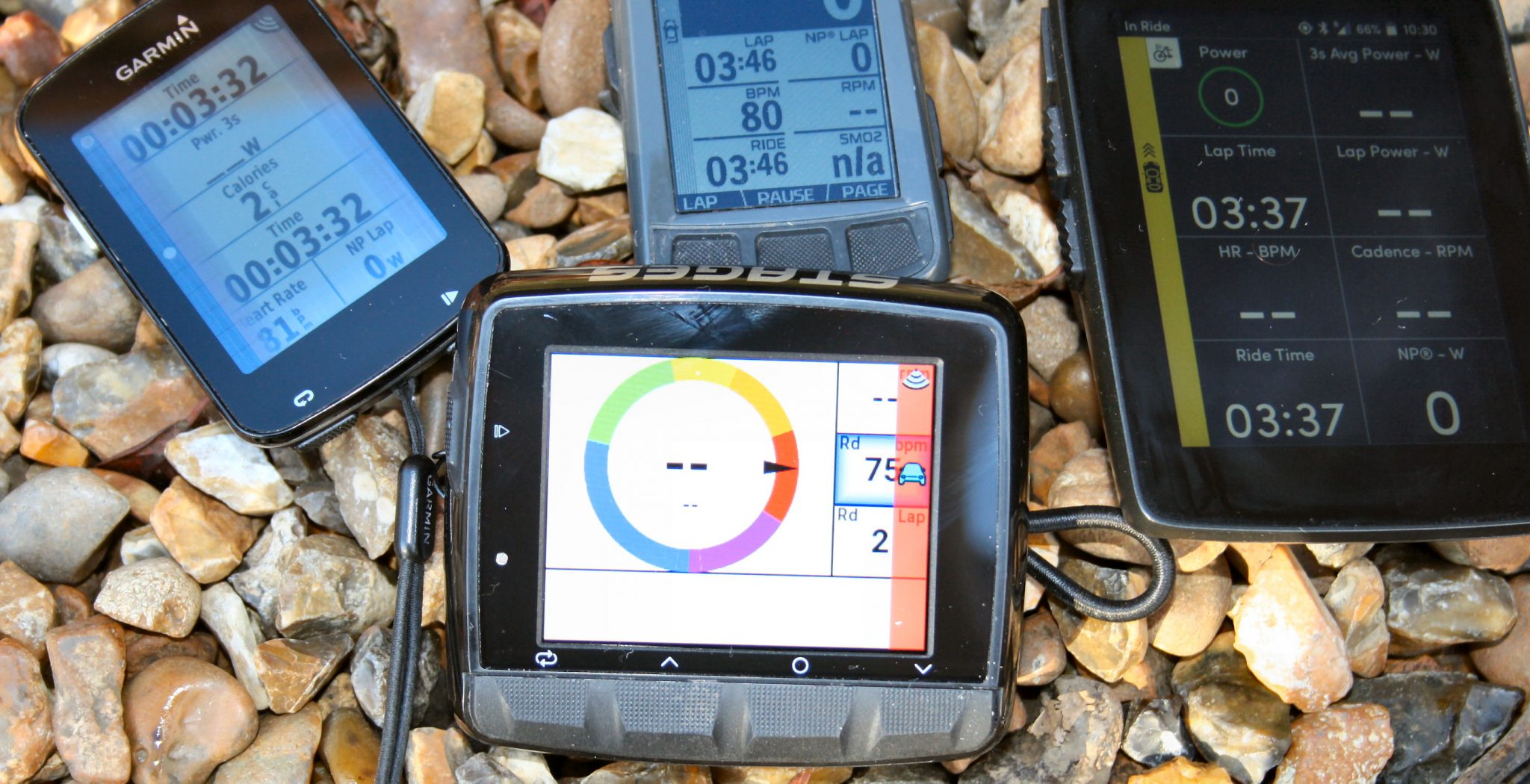
So, this is really cool stuff. I can’t think of anything quite as comprehensive as this from any other bike computer. Perhaps an out-of-the-box Garmin could get close but a Garmin would have more functions if you then included the capabilities of some 3rd party CIQ data fields.
If you are a data nerd you have already bought a Dash. However, if you are overly concerned about the shade and hue of your handlebar tape then you would probably think that the Dash’s visual aesthetic is a little rough around the edges. And if you are an occasional cyclist you might think this all looks a bit too complicated.
Courses, Routes, Maps & Navigation – Stages Dash L50 Review
Stages have a comprehensive enough solution for maps that makes use of functionality throughout its own platform as well as linking and syncing to some other platforms – for example, routes can be brought in from Strava.
 In fact, the only material omission is routing intelligence on the Dash+Stages App and what that means is all you can NOT do is create a route on-the-fly on your Dash/app either to an address or POI. Indeed if you get lost whilst following a route the Dash does not know how to INTELLIGENTLY route you back. That omission is fine because, in my experience, by far the majority of cyclists have simple navigational needs and will follow a pre-prepared route, either one they’ve made for themselves or grabbed from somewhere else.
In fact, the only material omission is routing intelligence on the Dash+Stages App and what that means is all you can NOT do is create a route on-the-fly on your Dash/app either to an address or POI. Indeed if you get lost whilst following a route the Dash does not know how to INTELLIGENTLY route you back. That omission is fine because, in my experience, by far the majority of cyclists have simple navigational needs and will follow a pre-prepared route, either one they’ve made for themselves or grabbed from somewhere else.
I managed to get my heatmap-driven routes sync’d in from STRAVA plus some from RideWithGPS and, apparently, AllTrails works as well. Providing that the imported route file came with TBT or elevation, then those ‘extras’ were incorporated correctly by Stages BUT there didn’t seem any way to add either elevation or TBT within the Stages environment. This seemed a strange but minor omission as when you create a new route in Stages Link yourself both TBT and elevation are added. The following image shows just that for a route I created myself in the stages environment. As you can see you get street names rather than a simple turn left/right instruction which is cool.
To me, another interesting aspect of following the route below is that it correctly routes through the green area in Syon Park…I had to change it to calculate a walking route to do that but, other than Garmin’s routes based on their Heatmap, NO OTHER bike navigation gets this particular segment right. OK I had to use walking mode but some competitors don’t offer a walking route option and, in any case, even when I did the same route in BIKE mode Stages still ALMOST got the route right.

However, my biggest gripe here is the organisation of it all. If I sat you down in front on Stages Link for the first time there is no way you would figure out how to get your STRAVA routes and create a new route and then get them all to your Dash. Well, you might eventually figure it out but I reckon it would take you at least half an hour without any help eg from a manual. It’s simply not intuitive (#PersonalCall). Even when you know how to do it (I do) it still requires a few pauses to check your sanity before proceeding. HOWEVER once you get to the actual bit of functionality you want, what you will find is GOOD. This is a common theme throughout the Stages Dash/Link experience ie Good functionality obscured by poor organisation. It’s worse than Garmin’s organisation (user experience). Of course, this criticism is primarily because I don’t use the Dash exclusively, after a while you would find using the Dash becomes second nature and all would be good.
Structured Workouts & Plans – Stages Dash L50 Review
Higher-level athletes are much more likely to be following a plan – either their own, their coach’s or one they’ve bought. Because Stages target high-level athletes, the functionality offered here is good and sometimes mind-blowingly awesome – the flexibility is incredible. The plans from Stages Link and Today’s Plan are sweet and the ability to create and/or sync a workout to the Dash is good too.
The two ‘missing links’ here are the ability to CONTROL a smart trainer via FE-C and the ability to create your own workout without needing a subscription or paid-for plan from Stages/Today’s Plan. These are both slated to change in April 2020, so I will leave my criticism at that.
Thus the main thing left to discuss here is the creation, scheduling and display (execution) of complex workouts.
Despite my frequent criticisms of ‘many things Garmin’, I will say that I like how Garmin support the creation of complex, structured workouts. Their principle has not really changed too much over the years and is one of those ‘mostly works’ kinda things. In more recent years I’ve used Training Peaks Workout creator quite a lot because of its generally good integration with my Wahoo Elemnt/Kickr – however, TP’s workout creator is a mild PITA to use. Plus other Wahoo users have found that the free TP account only allows you to schedule workouts for the ELEMNT for today and tomorrow which must be annoying in the extreme.
Coming to Stages’ workout creator was an eye-opener. It really is an extremely powerful and comprehensive tool. In terms of what it can create for a demanding coach or athlete, Stages Link is notably superior to Garmin. You might be concerned if you are able to create a nested interval…well, there’s no need to be concerned. There is more than you ever imagined built into the workout creation, just take the following two screenshots as examples.
You can build workouts for compatibility with different platforms (TR, TP, Zwift, Garmin, etc) and you can tag workouts so that you can more easily retrieve and reuse them later from your extensive workout library. Naturally, you can create swim workout as well as running and bike workouts and I was highly impressed with the ability of a SINGLE workout to automatically progress over time. What I mean by that is that one of the foundations of periodised training is that you progressively increase the stress on your body over the weeks and you can encompass that in your workouts by automatically varying the number of future reps or intensities…all within one workout. Once Stages workout can do all of that.
Once again, I am twitching to criticise the complexity on offer here. Yet, on reflection, there IS inevitable complexity when you devise and implement a ‘proper’ plan. You and I might ignore some of the initial complexity and devise a relatively straightforward plan BUT down the line, we would probably have to deal with the complexity we omitted when we created it eg by tweaking last week’s workout to add progression or somehow trying to fudge the execution of a less-than-perfect workout on the day.
Yes, devising a training plan is complicated but a ‘proper’ plan would include progression and a proper coach could have an extensive library of workouts from which it might otherwise be hard to find the right one for a given athlete. Stages works with this.
I digress. Have a look at this image, which is the workout creator. Look at all the extra supporting info…RPE, estimated watts, intensity. Cool stuff.

Then you can drag and drop to your calendar, easily adding in repeats of the workout to future weeks.

I’m digressing again from the Dash, so here but one last thing. These load and CP charts on Stages Link are nice. If you self-train or are a coach you will have seen them before but, hey, I like a good chart.
Varia Radar Support
At the back end of 2019, Stages introduced Garmin Varia support. This is a great safety feature for those cyclists who have discovered the joys of smart lights and rear-facing RADAR.
Smart Trainer & FE-C support & Clever Graphs
July 2020: Stages have added in some cleverly-configurable zoned graph types and following on from that Stages implemented trainer control.
Accuracy – Stages Dash L50 Review
Elevation Accuracy – Stages Dash L50 Review
This one was from 3 hours of reasonably hilly cycling and the Dash is good, note there is a DEM/SRTM-corrected track which the Dash is close to, close enough for me.
Here’s another one from a few months back which looks alright to me, the 945 is not showing its elevation data because of FIT file format changes #LongStory

I didn’t calibrate the elevation on this one. On a shorter ride, you can see here that all the devices’ elevation profiles follow the correct elevation reasonably well, so your ascent/descent figures should be about right but clearly the absolute levels are somewhat ‘off’ in this example.

For those of you who want super-accurate elevation then Garmin has pretty much nailed DEM-based elevations for most topographies where an elevation can be assigned to a GPS position (DEM elevation is NOT GPS elevation, they’re different). But these elevations from Stages, based on a barometric altimeter, look decent.
GNSS / GPS Accuracy – Stages Dash L50 Review
Let’s start off in Windsor where the Dash (Blue) perform near-identically to the 945 and better than the OS/TwoNav Trail2Bike.
On the same ride, the Dash remains good although thrown off a bit here by the trees. You have to zoom in to find that Google has the road in the wrong place.
Same ride; good enough again. I had to stop after the circle/roundabout to let someone catch up…at least that’s my story, and I’m sticking to it.
Here’s a more recent ride with the Dash in yellow going up Box Hill twice. It’s not a particularly hard hill, it has the only smooth roads in SE England (because of the 2012 Olympics) and that’s why everyone goes there. Each devices’ track look good when zoomed out so the subsequent image zooms in a bit
As promised here we have some more detail. The Dash struggles a bit with the trees in the middle of the image but it’s alright and certainly better than the Wahoo (green) that gets the switchback turns quite wrong.
On the same ride, we sample the delights of Leatherhead town centre. The building doesn’t seem to dent the GNSS performance too much.
Yet another ride and this time it’s multiple laps in Richmond Park. Hopefully, all is clear 😉 The Dash in red doesn’t form the outlier track so I guess that means it’s good.
Similarly at the circle/roundabout 1km further to the South East the multiple passes again show the Dash to be consistently good enough. With the 945 (yellow) trying really hard to get into the car park for a rest (on the right).
Accuracy Summary
The Dash is fine here. Nothing to see.
More Thoughts & Opinions
The Dash L50 and Garmin Edge 530 are priced very similarly in the UK, with a bit of shopping around you might get the Dash £20 cheaper. Unless you want something very specific from the Dash or you are just fed up with Garmin, then the Dash doesn’t justify its price compared to the Edge. Hammerhead slashed the price of the Karoo at the back-end of 2019 and sold all they had…there REALLY IS a good degree of price sensitivity with bike computers as well as brand loyalty coming into purchasing decisions. Companies wanting to compete with a more highly featured Garmin NEED to clearly differentiate their product.
The Dash L50 is priced notably lower than the Hammerhead Karoo. OK, you can get 10% off the Karoo with a discount from my site but the Dash would still be notably cheaper. However, don’t forget that the Karoo can now control your trainer with FE-C which the Dash can’t do and for a competitive bike computer in the middle of the Covid19 outbreak that might be a key feature you’re looking for.
The ELEMNT ROAM is a tad more expensive than the Dash and the ELEMNT is cheaper. If you’re really into Training Peaks, controlling your FE-C trainer and STRAVA live segments then you wouldn’t consider the Dash. However, comparing the navigation on the Dash to the basic ELEMNT would clearly point you towards the Dash and if you have already invested in Stages Gen 3 power meter cranks and Stages Link then the Dash probably makes more sense to you.
So that all sounds a bit negative, right? Maybe. However if you just want a change from your Garmin then the Dash really does have a lot to offer. If I had all my bike computers stolen an wasn’t allowed to buy a Garmin then I’d look more closely at the Dash and the Elemnt…especially as there are new features expected for both in the near future.
Price, Discounts & Availability – Buy Stages Dash L50 Review
Both the L50 and M50 Dash units are widely available to buy from specialist bike retailers and sometimes on Amazon too. Prices are generally controlled in the USA/Eu/UK but you should be able to get periodic 10% discounts from one of the retailers at the buy link, below. For example, at the time of writing, you can get 17% off from Wiggle in the UK, although Wiggle state a higher RRP, so really it’s 10%ish. Same with PowerMeterCity in the USA
- L50: $299 / E299 / GBP259 / A$499
- M50: $249 / E239 / GBP199 / A$399
-
Price - 90%
90%
-
Apparent Accuracy - 95%
95%
-
Build Quality & Design - 80%
80%
-
Features, Including App - 90%
90%
-
Openness & Compatability - 85%
85%
Summary
 If, like the Team Sky of old, you have Stages power meters and if you use the Stages Link performance training software then you’ve probably already got a Stages Dash L50 or M50. You’re just reading this for someone to tell you that you made a good choice.
If, like the Team Sky of old, you have Stages power meters and if you use the Stages Link performance training software then you’ve probably already got a Stages Dash L50 or M50. You’re just reading this for someone to tell you that you made a good choice.
You made a good choice.
As a one-stop-shop, with those 3 components, the Dash L50/M50 should reliably do its job to support performance-focused riders. It slightly falls over in targetting other kinds of riders who might instead buy a Wahoo simply because Dash does not deliver as sleek a ‘user experience’; add in the required subscription to Stages Link for some premium features and the initially-attractive Stages Dash loses some of those potential customers.
I could focus on the ‘cons’ (below) and bemoan the design of the power-on button or the out-front mount but there is something endearing about the Dash, it makes you want to like it. There’s something honestly-rugged about it and its appeal to ‘proper’ cyclists is somehow compelling. Where the Hammerhead Karoo would have THE most beautifully crafted onscreen data metric for a power zone, the Dash has a little box with a varicoloured edge. But, you know what? it works. It does the job and that commands respect, at least in my eyes.
But it does more than the aesthetics job. It does the training job too…and it does it WELL.
Pros
- The screen is so bright it will blind you and the power management will see you through to the end of your longest of long rides.
- Feature city – it has them all for those of you who want to train ‘properly’
- Cool and sometimes innovative on-screen graphics
- TBT and mapping support
- Robustly designed exterior
- Cool adaptive training zones
Cons
- The standard out-front mount is a bit rubbish and you must use a tether to avoid accidental loss.
- The art of using the power button escapes me. Apparently it was designed this way to avoid accidental power-ups whilst in transport.
- No mapping intelligence ie Dash doesn’t include re-routing or on-device routing
- With an interface and smartphone app designed by a techie, usability could be improved.
- No Fe-C control – due to be added in April 2020.
- No Strava Live Segments
- Some features require extra payment (this may change in April 2020)

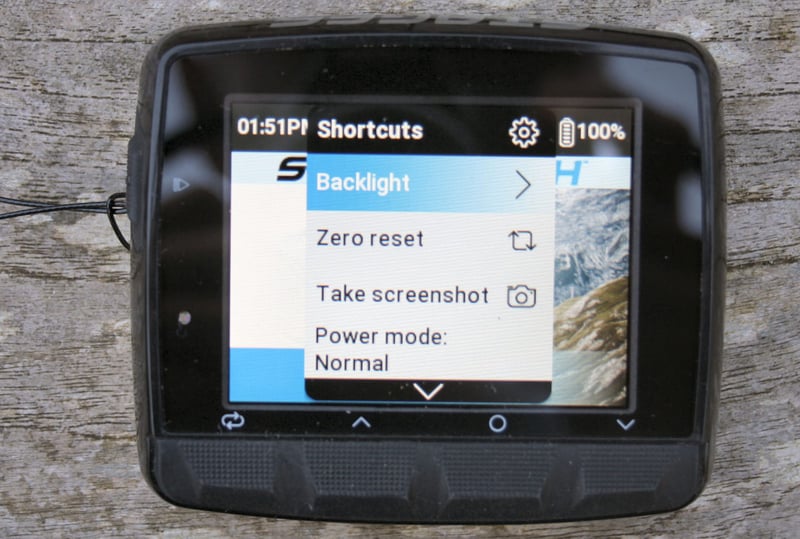
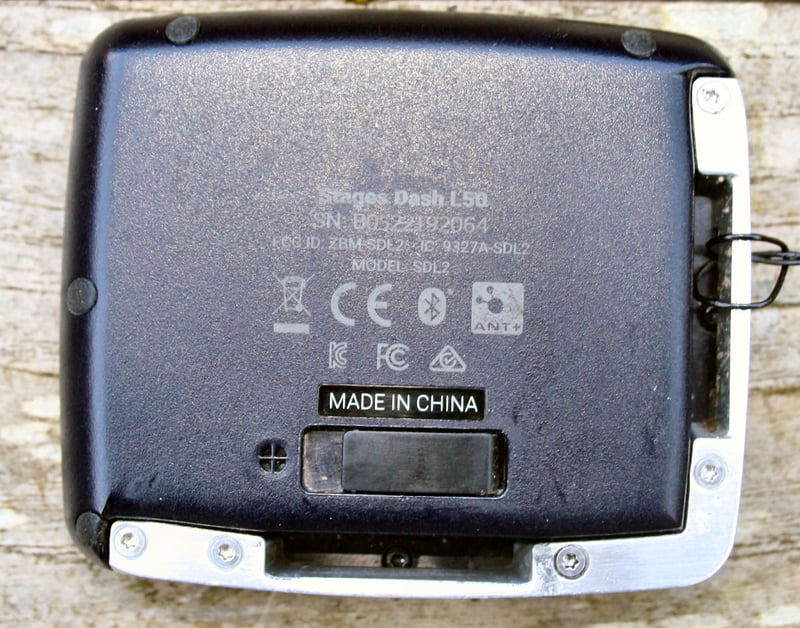

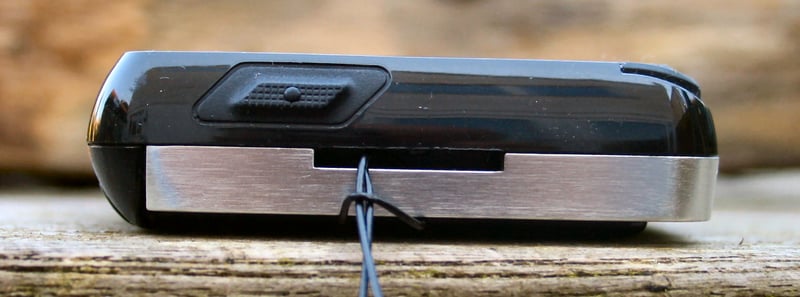
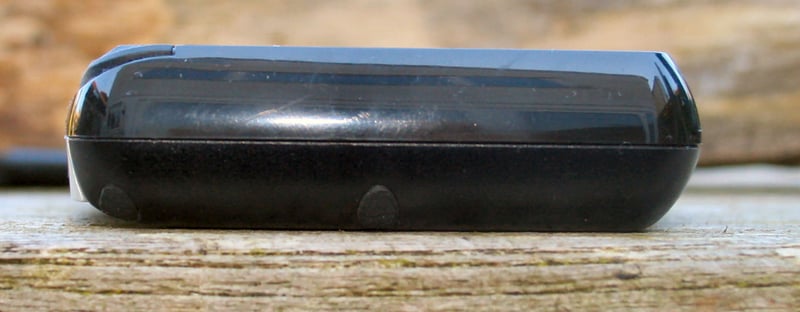

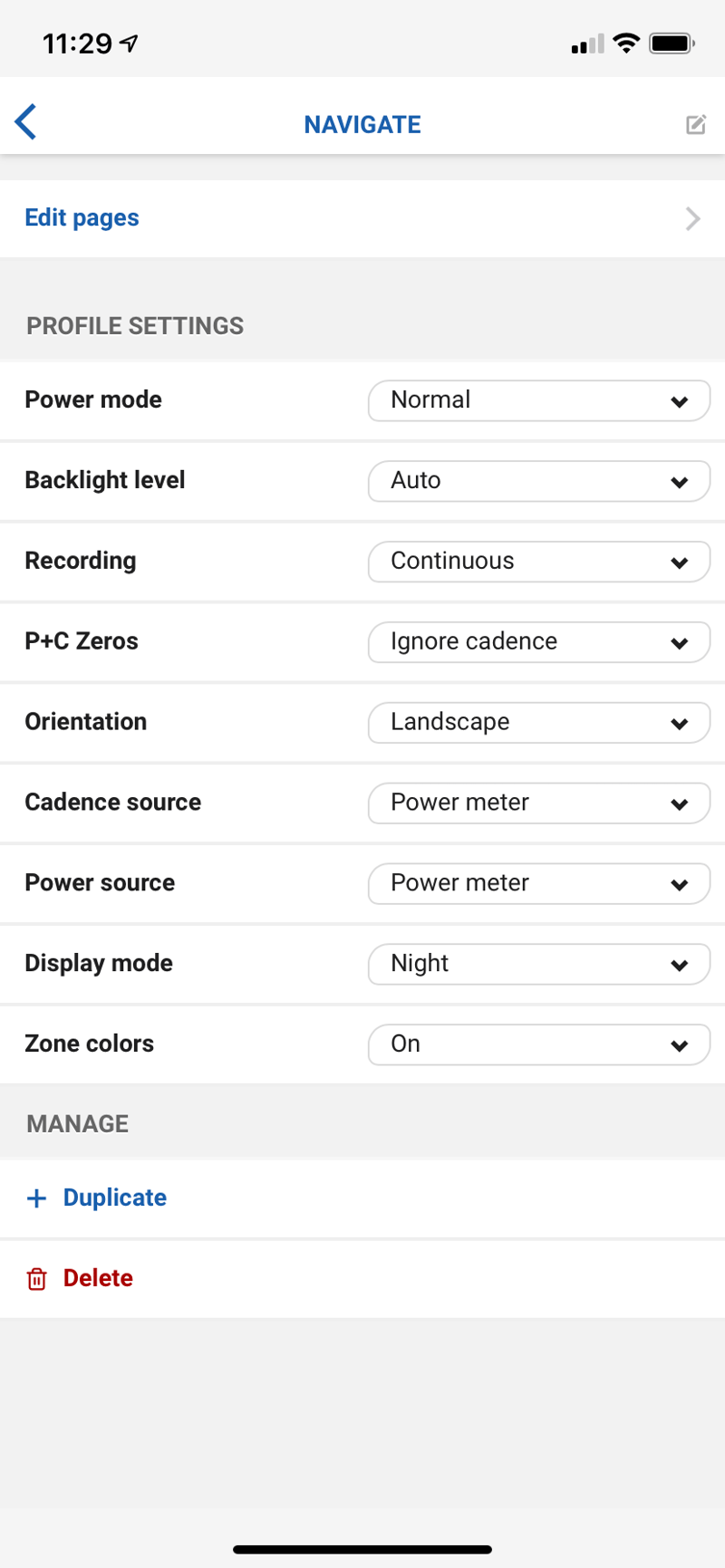








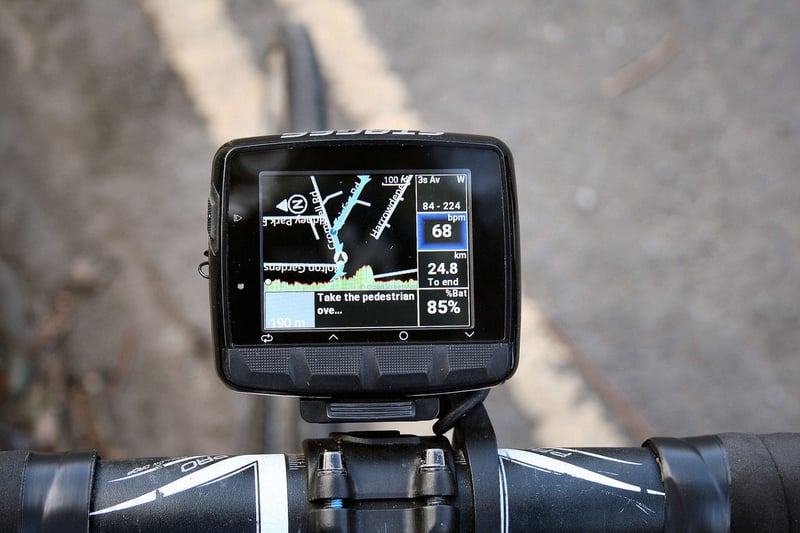
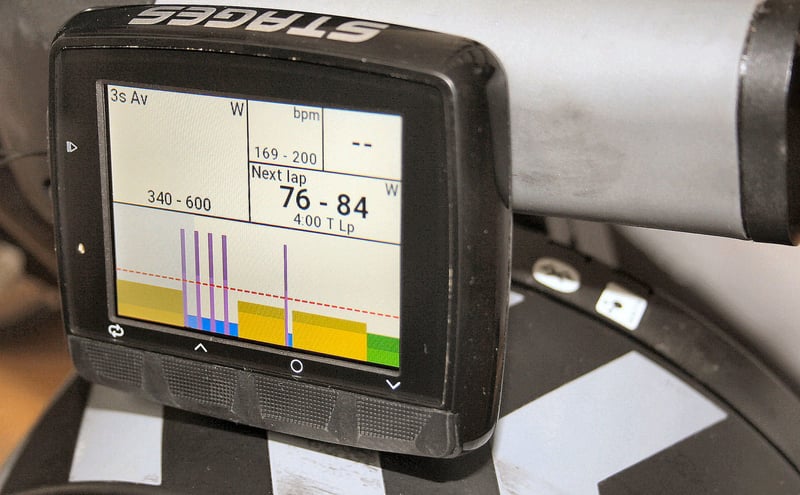
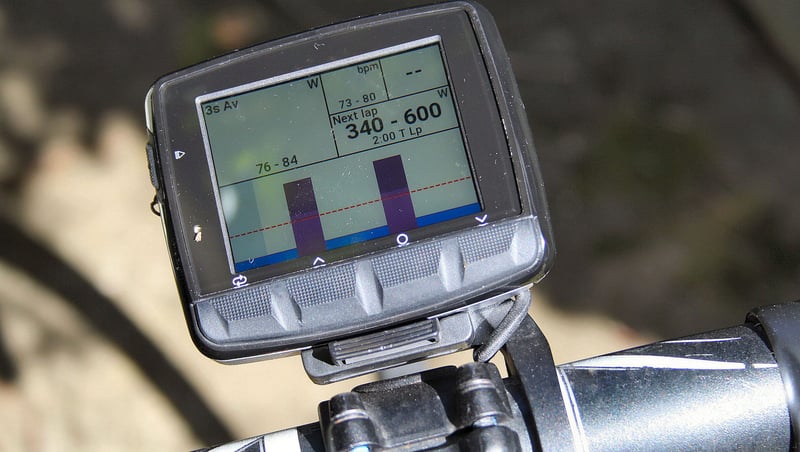
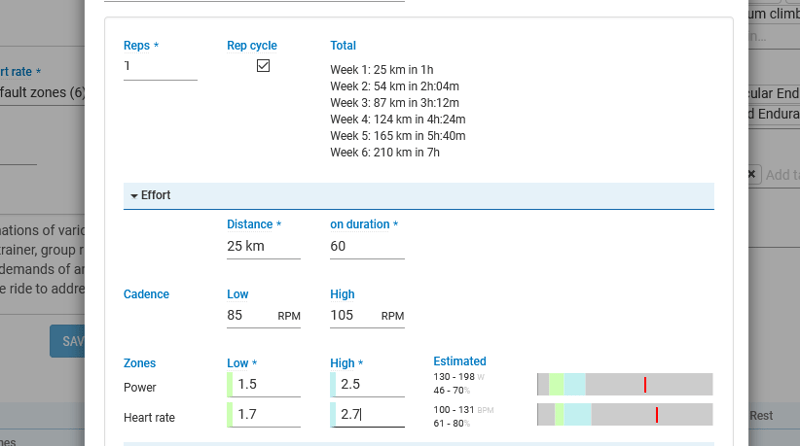
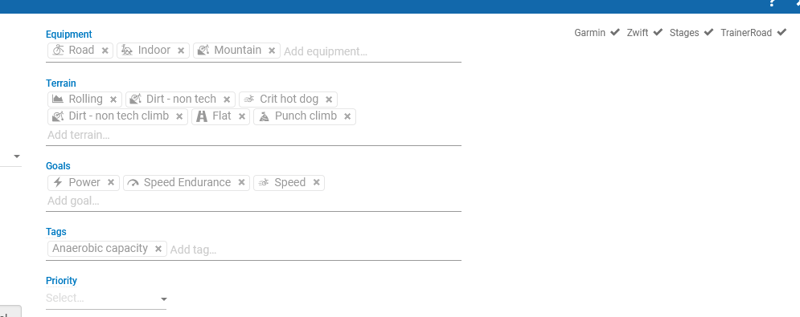
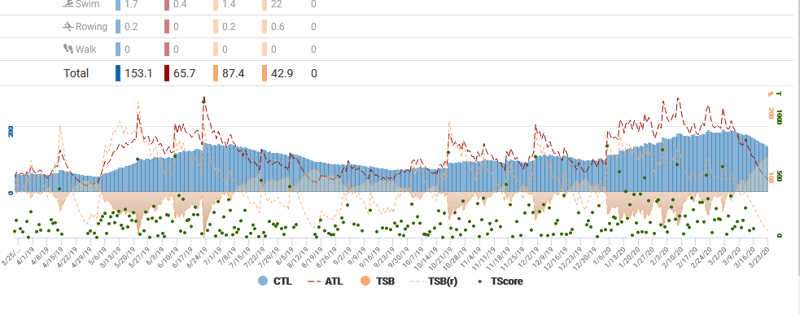
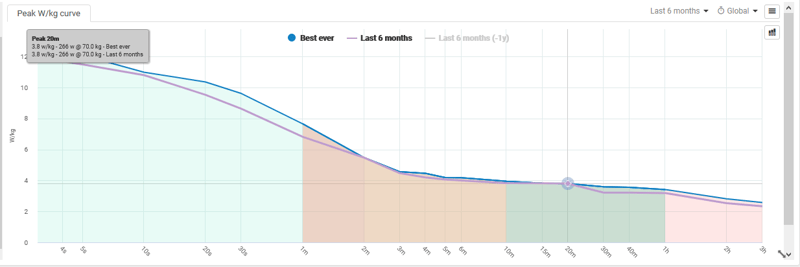










On screen call and SMS. Not email.
thank you.
FE-C control was added as expected, may want to update the review accordingly?
oooh. when did that baby sneak in? I was in touch with them last week and it was never mentioned.
thank you !
Very thorough review with lots of useful information. I own the M50 and like it a lot. I hate the front mount too as the unit bounces like crazy. Not a deal breaker at all. However, I am struggling to get my STRAVA routes on the Dash (or create a new route and then get them to the Dash). Any tips/links or a how to video would be appreciated.